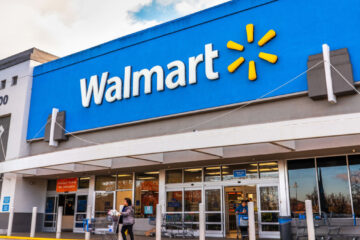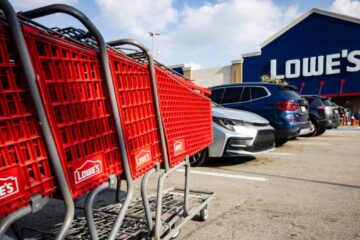Starbucks has already taken something with a quirky history — the coffee shop — and brought a level of corporate uniformity to it. That can be a positive as local coffee shops often have poor training, inconsistent recipes and questionable coffee.
There are, of course, some amazing local coffee shops, but it’s a risk every time you walk into one while Starbucks delivers the same experience no matter where you might be.
Related: Starbucks faces huge new rival
There’s a strong positive in keeping the food and beverage experience at every Starbucks. That brings customers in because they know their latte, Frappuccino, Pink Drink, or anything else they might order will be exactly as expected no matter where they might be.
Starbucks (SBUX) CEO Brian Niccol, however, has gone too far in homogenizing the coffee chain’s experience. He has instituted a new dress code, which went into effect earlier this month that limits what workers can wear under their green aprons to a solid black shirt and khaki, black, or blue denim pants.
💵💰 Don’t miss the move: Subscribe to TheStreet’s free daily newsletter 💵💰
That’s a change from the past when baristas could wear any colored shirt as well as a wider range of pant colors, including brown, navy, and gray.
It’s a move that removes some of the personality from the chain’s workers, which harms the Starbucks experience.
This shirt would violate the Starbucks dress code.
Image source: Getty Images
Starbucks workers are not robots
While Starbucks is a national chain, its stores are local businesses, part of the community. Baristas build relationships with customers through their personalities.
Niccol, and his predecessors, have worked to bring new technology to Starbucks cafes that make it easier to produce drinks. That should, in theory, free up workers to build meaningful connections with customers,
Yes, there might be some tiny percentage of the coffee chain’s audience that gets offended when a barista used their clothing to express something personal, Most cafe visitors, however, either did not notice or simply noted it as part of the unique person taking care of their coffee order.
At my local Starbucks, the guy on the headset at the drive-through greets you with exuberance, and has used a Dracula voice and Grover from Sesame Street at various times. I’ve seen him in costumes, wearing Christmas gear when it wasn’t Christmas, and otherwise expressing himself.
He’s charming and asks where I have been when I haven’t visited in a while. It’s a small thing, but he serves as a likable face of the cafe who welcomes people in.
More Retail News:
After closing stores, Walmart makes a big additionFormerly bankrupt restaurant chain reopens locations, adds new itemPopular breakfast chain goes national with surprising deal
Forcing employees who do a difficult, physically intense job to give up some of their personality hurts Starbucks. Coffee is a beverage about connections and connecting with store workers is part of that process.
Yes, it’s important to deliver a consistent experience, but that should be about coffee and food, not stopping workers from wearing shirts that express their quirkiness, individuality, or even sexuality.
Retail leaders agree with Starbucks
While unions representing Starbucks workers think this issue should be collectively bargained, the retail experts who make up the commenting community at RetailWire seem to largely agrees with Starbucks.
“Starbucks owns the business; it is up to Starbucks to set the policy. If unions want to set the policy, they should establish their own company. And I actually don’t think the request is too onerous, especially when Starbucks are offering free shirts to employees and there is still flexibility in what can be worn,” Global Data Managing Director Neil Saunders wrote.
Cathy Hotka agrees.
“Mandating a black top is an easy ask. Associates can express themselves in any way they want, as long as the top is black. I don’t see a problem,” she shared.
Georganne Bender similarly misses the point.
“Every business has the right to implement a dress code that represents their brand. Requiring baristas to wear black shirts under their green aprons is not asking too much,” she wrote.
That’s correct. Starbucks can do it. Paula Rosenblum, however, actually understands the business the coffee company is in.
“You know, if a big problem is that your business is commodifying (and Starbucks is) while remaining overpriced, putting every employee in the same clothes just emphasizes the sea of sameness. Eclectic is in. There is nothing eclectic about today’s Starbucks,” she wrote. “…So I think the focus is all wrong. Sorry.”
Allison McCabe backs that up.
“My big focus at Starbucks is hoping that the coffee I ordered on the mobile app is there and actually IS what I ordered. All for creative expression as long as the job is done well!” she added.
Starbucks benefits from its workers being people with personalities, not robots who hand you coffee. Yes, some people just want their drinks with minimal interaction, and that’s certainly an experience you can have by ordering through the app.
Related: Forget Starbucks, these coffee chains are taking over consumers
In a world that’s becoming increasingly automated, human interaction and a chance to build connections with customers has actual value. Niccol is seeking to get rid of that because some tiny percentage of customers might be offended by a rainbow shirt or some other subtle personal expression.
It’s a mistake and Starbucks actually surrendering a competitive advantage. The chain attracts smart workers who often have personalities which help them connect with customers. Dialing that back by making everyone dress the same makes it that much easier for customers to opt to get coffee at the dozens of other drab, soulless chains where workers act like drones.


